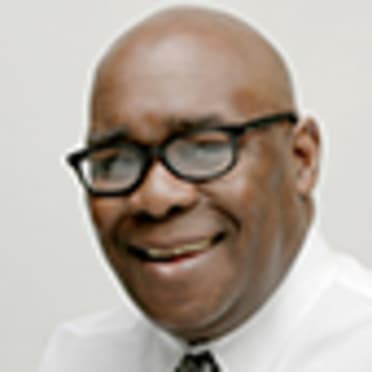Negro Leagues Museum reopens after shutdown
Museum President Kendrick 'couldn’t ask for a better day'
Negro Leagues Museum president Bob Kendrick recently celebrated his 58th birthday, but he had a bigger day on Tuesday when the Negro Leagues Baseball Museum reopened for the first time since March 14, when the coronavirus pandemic forced it to temporarily close.
“We are all excited. It has been a good day to feel life in the museum again,” Kendrick said. “I couldn’t ask for a better day. To get this place back and running is the best gift I could have received. To see people coming in made it even better.”
The NLBM is currently celebrating the 100th anniversary of the Negro Leagues, a celebration that will continue through 2021. Things were a little different on the first day back in business on East 18th Street, between Vine and Highland, just across from the Gem Theater in Kansas City, Mo.
There were limited hours (10 a.m. to 5 p.m. CT Monday through Saturday, and noon to 5 p.m. on Sunday), with plans for increased sanitizing every day, as well as social distancing. Every employee wore a mask. NLBM did not require customers to don a mask, but nearly all of the 100 who visited on Tuesday wore one anyway.
“You could tell the atmosphere changed,” Kendrick said, referencing the visitors. “When the place was dormant, it just didn’t feel the same. … It wasn’t business as usual [on Tuesday], but it was business again. It was the business of promoting, educating and generating awareness about this great history. It felt good.“
The NLBM is a privately funded, nonprofit organization. Memberships to support the museum are available ranging from $25 to $1,000 and can be annually renewed. Membership includes free admission for the year, a 10% discount on merchandise from the NLBM Extra Inning Store and advance information on special events. Members also receive a gift and additional benefits at each level of support.
There is a lot to see at the museum, including an exhibit called Black Baseball In Living Color. It features the artwork of Graig Kreindler, who transformed black-and-white photos of Negro League players into color paintings, a project that took three years to complete.
There were sections of the exhibit that had a painting of Rube Foster, who helped create the Negro National League, as well as Josh Gibson, Satchel Paige, Cool Papa Bell and Jackie Robinson. Kreindler did paintings of 107 players who played in the Negro Leagues, including Willie Mays and Monte Irvin.
There is even a display of former basketball great Goose Tatum. Although known for his days with the Harlem Globetrotters, he was an excellent first baseman for the Indianapolis Clowns.
“We have this great video of Goose in some of the things he did as a Globetrotter. He could also do with the baseball. He was a magician with a baseball,” Kendrick said.
Although Kendrick had a difficult time closing the museum, he kept busy during the shutdown. He did everything he could to make the NLBM relevant, including making appearances on MLB Network and with other news organizations to talk about the importance of the museum and to address the issue of race in baseball and society.
Kendrick even hosted his first podcast for MLB Network Radio, a week after the death of George Floyd. “Baseball and Black America” featured six current players, including Pirates first baseman Josh Bell and Brewers center fielder Lorenzo Cain. All expressed outrage at Floyd’s death at the hands of Minneapolis police officers, and all advocated for justice for Floyd and for police reform to address the larger systemic issue of police brutality, especially against Black Americans.
“I was extremely honored that MLB Network Radio asked me to moderate that discussion on baseball and race in America with those amazing African-American ballplayers,” Kendrick said. “The fact that they wanted to lend their voice also made me very proud. At the museum, we have the museum about social injustice. Our museum is about the civil rights movement. So these players have a legacy as it relates to not only the game, but the things this museum and this institution represents both on and off the field. So, for me, to be here in that environment, moderating that discussion, really meant something.
“After that first month of [the pandemic], I might have been as busy as I’ve ever been, because I’ve been basically doing one interview after the other. The interviews have kept me plenty busy. That's a good thing because it has kept me on top of my game.”
Kendrick remains grateful that the NLBM has the support of Major League Baseball and the MLB Players Association. Both organizations made a joint donation of $1 million to the museum in February.
“I'll tell you what: The pandemic has hurt our operation," Kendrick said. "But it makes that gift [from MLB and the MLBPA] that much more meaningful and timely as we try to work our way out of what has been a very difficult, challenging economic situation for everyone, including the museum and cultural institution. With the help of Major League Baseball and the Players Association, it has certainly help lessen the blow.”
